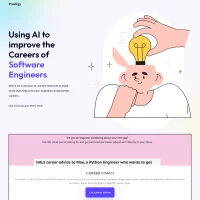Stay Ahead of the Curve
Latest AI news, expert analysis, bold opinions, and key trends — delivered to your inbox.
OpenAI Adds New Biosecurity Safeguards to O3 and O4-Mini AI Models
3 min read OpenAI Adds Biosecurity Safeguards: With its powerful new models o3 and o4-mini, OpenAI has launched a “reasoning monitor” to block prompts related to biological threats. Trained through extensive red-teaming, the system flags risky queries, reflecting growing concerns around AI misuse as capabilities advance. April 17, 2025 12:25
As its latest AI models grow more powerful, OpenAI is stepping up safety measures. The company has introduced a “safety-focused reasoning monitor” to detect and block prompts related to biological and chemical threats in its newest models, o3 and o4-mini.
Why It Matters:
O3 and o4-mini are a leap forward in reasoning capabilities — and with that comes higher potential risk. Internal benchmarks showed that o3, in particular, was more adept at answering questions about creating biological threats, prompting OpenAI to act.
How It Works:
-
The monitor is a custom-trained model that runs on top of o3 and o4-mini.
-
It flags and stops potentially dangerous queries that go against OpenAI’s content policies.
-
The system is the result of around 1,000 hours of red-teaming, where experts manually flagged risky conversations for the models to learn from.
In simulation tests, the monitor led the models to refuse to respond to biorisk-related prompts 98.7% of the time. However, OpenAI admits that adaptive users could still try alternate phrasing, which is why human oversight remains in place.
The Bigger Picture:
While o3 and o4-mini don’t cross OpenAI’s “high risk” biorisk threshold, they are already more capable than earlier models like o1 and GPT-4 in answering sensitive questions. The company says it will continue refining safeguards as model capabilities grow.
Bottom line: As AI continues to scale, biosecurity is no longer theoretical — and OpenAI is taking early steps to stay ahead of potential misuse.



















 AI Agents
AI Agents